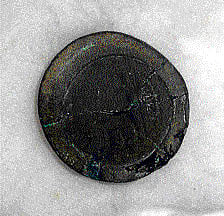
For those who think financial fraud or circulating fake currencies is a modern day phenomenon, an ancient Roman coin mould on display at the Department of Archaeology, Museums and Heritage in the city is a startling revelation.
The Roman coin mould, which is being displayed for the first time since its excavation in 1993, indicates that fake coins were in circulation around 19 to 20 centuries ago. The terracotta mould is among the most important objects displayed at the exhibition, apart from terracotta figurines, iron objects, bronze dies, stone beads.
M S Krishnamurthy, a retired professor of Archaeology who led the team that unearthed the mould, told Deccan Herald that it was a mould for Roman coins in circulation during the first century AD. “The coins probably were minted either during the period of Augustus or his son Tiberius,” he said.
“In the area where we spotted the mould, a foundry with a crucible was also found. Considering this, it is possible that a person living in Talkad was minting duplicate coins of Romans,” he said. He added that it was one of the rare and unique moulds excavated in the State.
Archaelogist Gowda N L said that the mould contained an inscription of Greek goddess Livia with words, ‘Maxim Pontis’.
“The coins with the same inscriptions were in circulation around the country. Roman coins belonging to the first century AD have been found in various excavation sites around the country. However, such a terracotta mould has never been found elsewhere.”
He added that the coins might have been minted at Talkad and circulated around the country. “It is possible that the value of Roman currency was more in India during the period, which might have led a few individuals at Talkad to indulge in minting fake coins,” he added.

